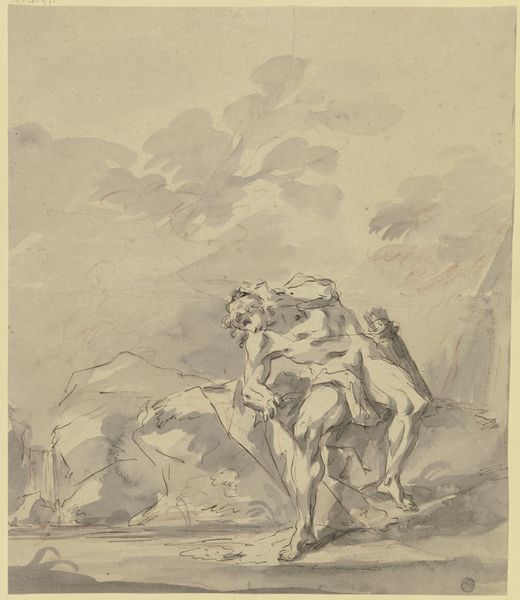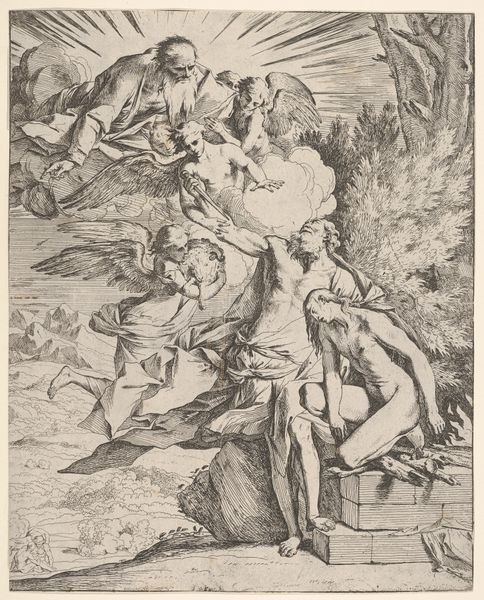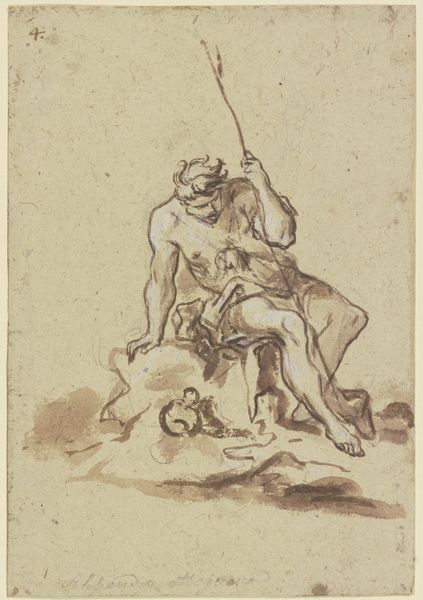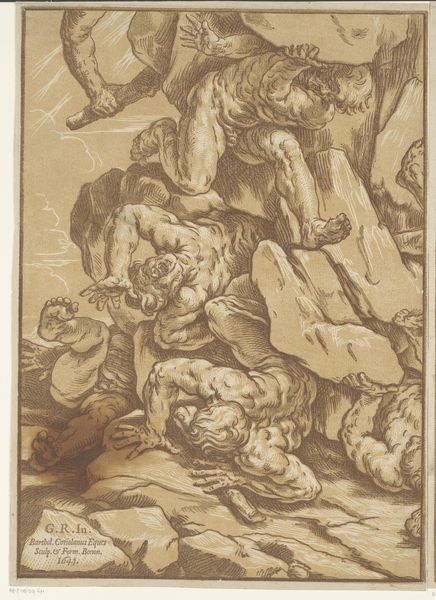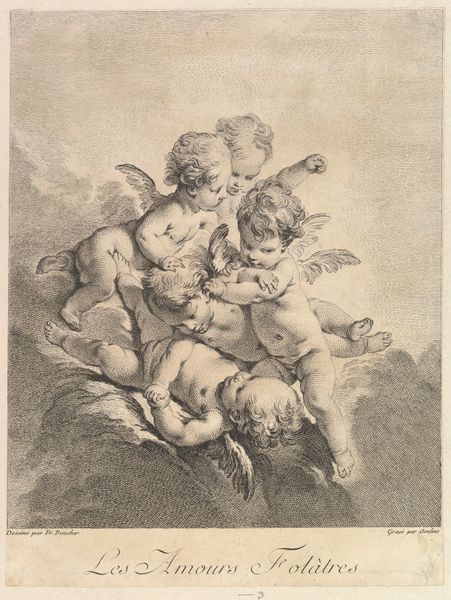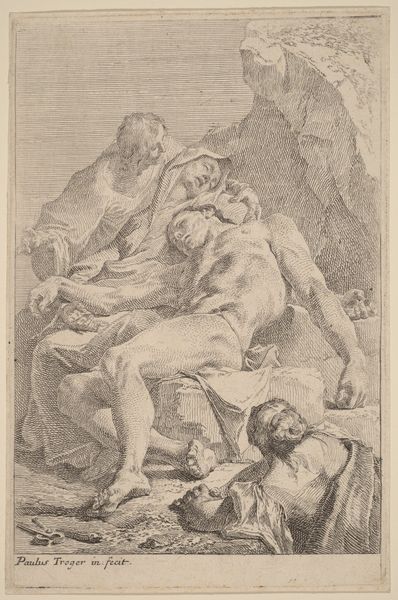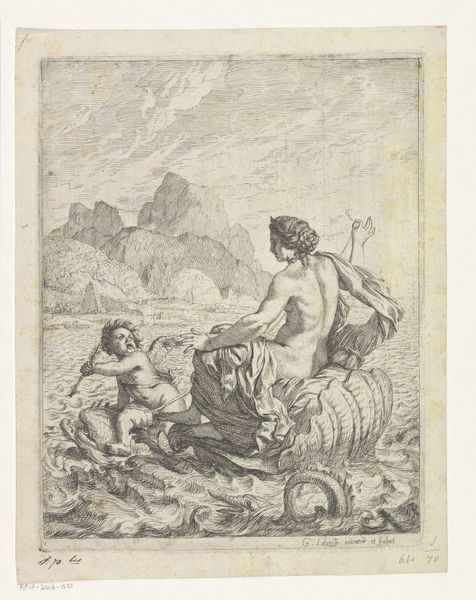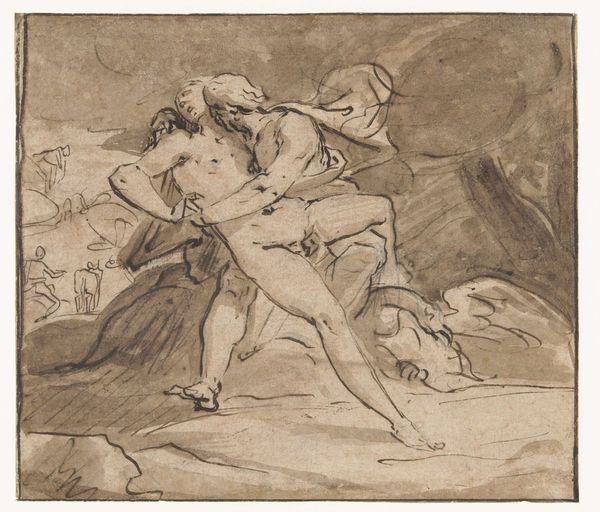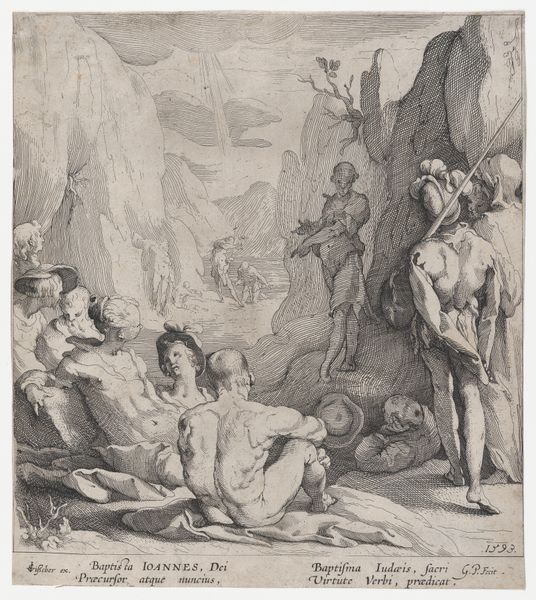
drawing, paper, watercolor, ink, indian-ink
#
drawing
#
baroque
#
landscape
#
figuration
#
paper
#
watercolor
#
ink
#
indian-ink
#
watercolor
Copyright: Public Domain
Curator: Immediately, I notice the layered washes of color, particularly the sepia tones that give it a dreamlike quality. Editor: Indeed. The artwork before us, “Zwei Amoretten mit einem Hund und einem Schaf,” features an idyllic pastoral scene rendered in ink and watercolor. Jacob de Wit's hand is quite evident, although the precise date of the work remains unknown. Curator: De Wit skillfully uses contour lines to define forms, but it is the use of washes which imbues the image with depth. The dog and sheep feel immediate, alive. What does that immediacy mean in relation to the material process, would you say? Editor: Considering the use of watercolor and ink, the drawing gains an ethereal transparency. These materials allowed de Wit a fluidity in his depiction of idealized shepherds, hinting at a delicate labor process and highlighting the gentle handling of nature in art production. It’s the material handling that underscores its beauty. Curator: The arrangement of the figures invites semiotic analysis. The sleeping figure is centrally placed with other shapes arranged around this axis. Even the animal companions – sheep and dog – frame our gaze toward the cupid, completing the allegorical nature of pastoral leisure. Editor: But allegories were often created under demanding conditions, don’t you think? I wonder about de Wit's specific access to high-quality materials – like paper – or access to skilled apprentices whose labor made works like this more plentiful in wealthy circles. Curator: An intriguing proposition. Looking at the subtle interplay of color and composition, the harmony achieved reflects Baroque sensibilities— an aspiration towards idealized form through considered visual expression. Editor: To your point, I can see an underlying Baroque vision that extends from workshops through art markets of the time, dictating what could or should be immortalized with such delicate natural pigments. Curator: Indeed. An exercise in observing both aesthetic ideal and underlying structure! Editor: And for situating idyllic imagery in the real, material world in which labor and patronage were inextricably linked.
Comments
No comments
Be the first to comment and join the conversation on the ultimate creative platform.
